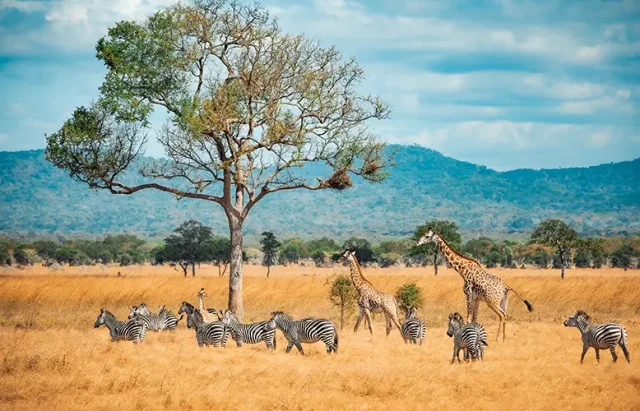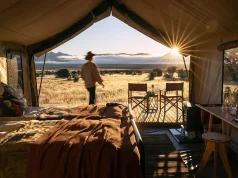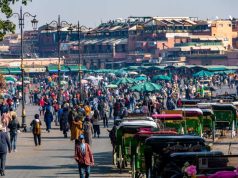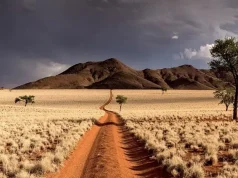
Africa is a continent like no other. Home to over 1.3 billion people across 54 diverse countries, Africa’s scale is matched only by its natural beauty and cultural heritage richness. This expansive continent boasts some of Earth’s most stunning and varied landscapes, from the savannahs of East Africa to the rainforests of central Africa and the deserts of North Africa. Each landscape also nurtures a wealth of indigenous communities who have thrived for centuries amid their surrounding environment.
Indigenous peoples have safeguarded Africa’s natural wonders through their resilience and stewardship of place while continuing cultural traditions stretching back millennia. This article aims to explore Africa’s diverse regions by highlighting signature landscapes and the communities closely tied to them. By delving into specific examples from Egypt’s Western Desert to the volcanic heights of Mount Kilimanjaro, we hope to convey Africa’s grandeur through the threads of nature and culture that define its local identities.
Terrain Beyond Belief: Africa’s Stunning Natural Landscapes
Africa’s natural landscapes are as diverse as its people, with each region offering a unique blend of geological wonder and cultural significance. In East Africa, the savannahs stretch out in seemingly endless plains, where iconic animals like lions, elephants, and giraffes roam freely. The Great Rift Valley also cuts through this region, creating dramatic escarpments and lakes home to some of the world’s rarest and most vibrant bird species. Moving west, dense rainforests cover central Africa, supporting many flora and fauna found nowhere else on Earth.
In North Africa, the Sahara Desert dominates the landscape, with its rolling dunes and ancient rock formations. Here, nomadic communities like the Tuareg have lived for centuries, adapting to the harsh conditions and creating a unique culture centered around camel herding and trade. The desert is also home to some of Africa’s most iconic landmarks, such as the Sphinx and the Great Pyramids in Egypt.
Down south, the landscape shifts again, with expansive grasslands giving way to towering mountains and deep gorges. Mount Kilimanjaro, located in Tanzania, is the highest peak on the continent and attracts hikers and adventurers worldwide. In contrast, the Namib Desert in Namibia boasts some of Africa’s most spectacular dunes, with some reaching heights of over 300 meters.
Wildlife Wonders Waiting to be Discovered
One of the main draws for many African visitors is its abundant and diverse wildlife. Africa’s wildlife is genuinely awe-inspiring, from the “Big Five” (lion, leopard, elephant, buffalo, and rhino) to thousands of bird species and other iconic animals like giraffes, zebras, and gorillas. Tanzania safari tours offer the perfect opportunity to spot these animals in their natural habitat while learning about the local communities who share these spaces with them. Many conservation efforts in Africa are focused on protecting wildlife and indigenous peoples’ cultural practices.
The continent’s national parks and game reserves offer some of the best opportunities to view these magnificent creatures in their natural habitat. For example, Maasai Mara National Reserve in Kenya is famous for its annual wildebeest migration, where over a million animals travel across the savannah in search of greener pastures.
Another unique wildlife experience can be found in South Africa’s Kruger National Park, where visitors can go on safari and have the chance to spot Africa’s famous Big Five. And let’s remember the mountain gorillas of Uganda and Rwanda, a critically endangered species found only in these two countries.
Cultural Diversity on Display
Beyond its natural beauty, Africa is also known for its diverse cultures and rich histories. From ancient civilizations to modern-day communities, the continent is a melting pot of traditions and customs passed down through generations. This cultural diversity can be seen in everything from vibrant art and music to unique culinary traditions.
For example, in Mali’s Dogon country, visitors can witness traditional village life and learn about the Dogon’s complex cosmology and ritual practices. In Ethiopia, the ancient city of Lalibela is home to 11 rock-hewn churches that date back to the 12th century, showcasing a unique blend of Christianity and traditional African beliefs.
Visiting local markets is also a great way to experience African cultures. From the spice markets of Morocco to the vibrant beadwork and fabrics found in Kenya’s Maasai markets, these bustling hubs offer a glimpse into everyday life and provide opportunities to support local artisans.
Consider Conscientious and Sustainable Travel
As we explore the wonders of Africa, it’s essential to consider our impact as travelers. The continent is facing challenges such as over-tourism and environmental degradation, which can threaten its natural and cultural treasures. As responsible travelers, choosing sustainable options that support local communities and protect the environment is crucial.
One way to do this is by staying at eco-friendly lodges and participating in community-based tourism initiatives. These experiences provide an authentic and immersive cultural experience and support local economies and conservation efforts.
Ultimately, Africa’s beauty is intricately tied to the people who inhabit it, and by being mindful travelers, we can ensure that this stunning continent continues to thrive for generations to come. So, when planning your next adventure, consider exploring Africa’s diverse landscapes, wildlife wonders, and cultural diversity. You won’t be disappointed.





